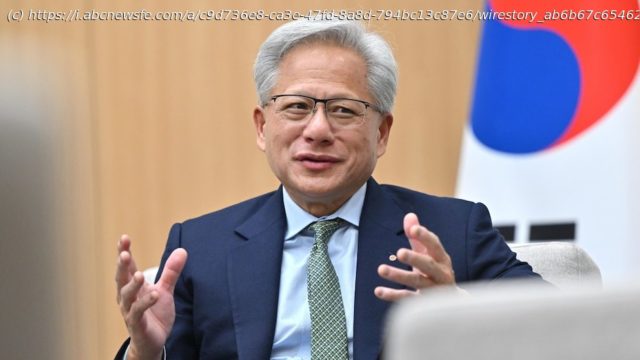Silicon Valley chipmaker Nvidia plans to supply its graphics processing units for projects with the South Korean businesses and government to advance the country’s artificial intelligence infrastructure and technologies
Silicon Valley chipmaker Nvidia plans to supply hundreds of thousands of its graphics processing units for projects with South Korean businesses and the government to advance the country’s artificial intelligence infrastructure and technologies.
The plan was announced Friday by the government, Nvidia, and some of South Korea’s biggest companies, including chipmakers Samsung Electronics, SK Hynix and auto giant Hyundai Motor, after President Lee Jae Myung met with Nvidia CEO Jensen Huang.
At a news conference, Huang said he hopes to export Nvidia’s most advanced AI chips to China, following U.S. President Donald Trump’s talks with Chinese President Xi Jinping on loosening U.S. chip restrictions as the two leaders pledged to reduce trade tensions.
However, he acknowledged that it was up to Trump to decide, and said there were no current plans to sell the next generation Blackwell chips to China.
Huang has gotten rockstar treatment reminiscent of Apple’s Steve Jobs since arriving in South Korea on Thursday to attend meetings of the Asia-Pacific Economic Cooperation forum in Gyeongju. As APEC host, South Korea is using the gathering of world leaders to showcase its ambitions in AI.
According to Lee’s office and the companies, Nvidia will supply around 260,000 GPUs to support South Korea’s AI computing and manufacturing capabilities.
About 50,000 of the GPUs will be used to support a government project to build a national cloud computing center for AI and Nvidia will provide the same number of GPUs each to Samsung and SK to help them enhance their manufacturing processes through AI and accelerate the development of advanced semiconductors.
Домой
United States
USA — IT Nvidia partners with South Korean government, companies to boost AI development






